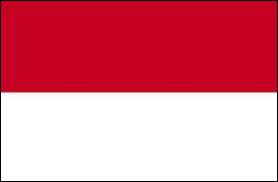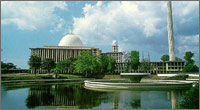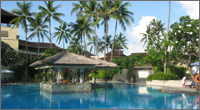
| Capital city: Jakarta |
| Total area: 1,890,754 sq km |
| Population: 237 mln |
| Major religion: Islam (89%) |
| Currency: Rupiah |
| Official languages: Indonesian |
Indonesia is the largest archipelagic state in the world that has 17,508 islands, situated between 6 degrees northern latitude and 11 degrees southern latitude and spreading from 97 degrees to 141 degrees eastern longitude and it is located between two continents – Asia and Australia/Oceania. This strategic position greatly influences the country’s culture, social, politics and economy.
The islands of Indonesia were formed in the Miocene age (12 million years BC); Palaeocene age (70 million years BC); Eocene age (30 million years BC); Oligacene age (25 million years BC). As people from Asia started to migrate, it is believed that Indonesia existed since the Pleistocene age (4 million years BC). The islands have a great effect on the change of the Australian and Pacific tectonic plate. The Australian plate changes slowly with an upward movement into the small plates of the Pacific plate that moves southward. Between these lines, the islands of Indonesia are stretched out.
This makes Indonesia as one of the most changing geological area in the world. There are 400 volcanic mountains – which 100 of them are active- that dot the islands of Indonesia. Every day Indonesia experiences three vibrations, at least one earthquake a day and one volcanic eruption in a year.
|
|
|
 |
(Source: www.deplu.go.id)

